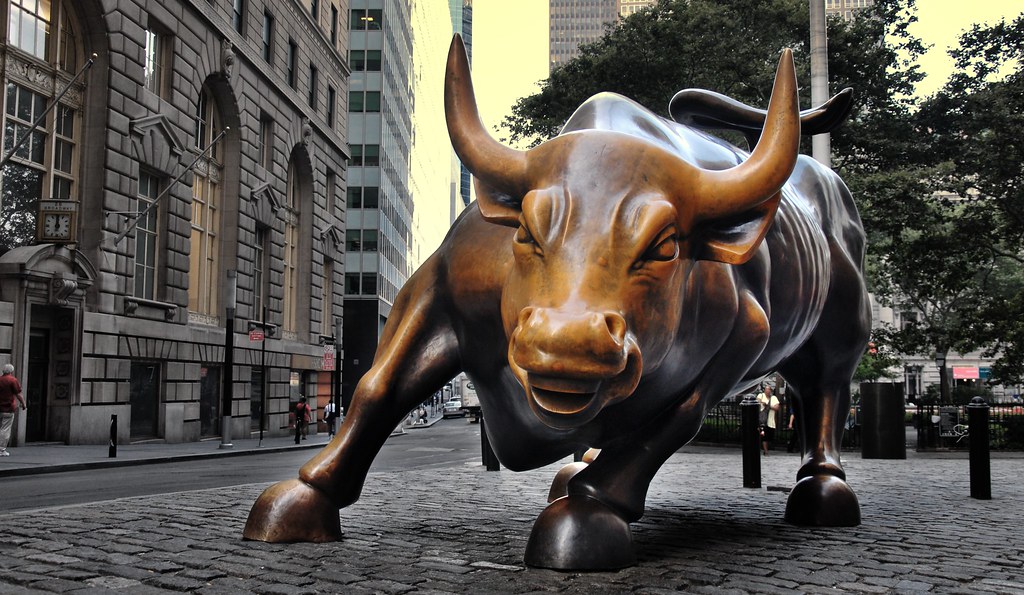The year was 1987, and the global financial markets trembled as chaos struck Wall Street on that fateful October day. Dubbed “Black Monday,” the 1987 stock market crash left investors around the world in a state of panic and disbelief. This pivotal event in financial history became synonymous with economic disaster and has since been analyzed and scrutinized by experts from all corners. As we delve into the details surrounding this calamitous event, it becomes increasingly evident that understanding the events leading up to and following Black Monday is crucial for both seasoned investors and newcomers to the world of finance. Join us on this journey as we explore the causes, consequences, and lessons learned from the market panic that shook the very foundations of the global economy.

The Ripple Effect of Black Monday: Understanding the Causes and Consequences
Black Monday, a term coined to describe the infamous stock market crash of October 19, 1987, sent shockwaves through financial markets worldwide. Understanding the causes and consequences of this event is crucial in comprehending the intricacies of the global economy and safeguarding against future crises. Several key factors contributed to this cataclysmic event, ultimately resulting in a domino effect that reverberated across the globe.
- Market Overvaluation: Prior to Black Monday, stock prices had soared to unprecedented levels, fueled partly by the growing popularity of computerized trading systems. The exorbitant valuations made the market increasingly vulnerable to sudden downturns, setting the stage for disaster.
- Program Trading: The rise of program trading, where large volumes of stocks are automatically bought or sold based on specific pre-programmed conditions, played a significant role in magnifying the crash. As panic surfaced, massive sell orders were executed by computer algorithms simultaneously, causing a rapid downward spiral.
- Global Contagion: The interconnectedness of financial markets worldwide meant that the shockwaves from Black Monday didn’t stay confined within the United States. International markets, fueled by the inability to react promptly to the situation due to different time zones, were deeply affected by the ripple effect of the crash.
The consequences of Black Monday extended far beyond the immediate economic fallout. It prompted regulatory interventions to curb excessive speculation and improve risk management practices. Securities and exchange commissions implemented circuit breakers that temporarily halt trading during extreme market volatility, aiming to prevent panic selling and allow time for rational decision-making. Moreover, this event highlighted the need for global cooperation and coordination among central banks to manage market risks effectively.

Examining the Key Factors that Led to the 1987 Stock Market Crash
Delving into the depths of the historic 1987 Stock Market Crash, an event that sent shockwaves through the financial world, it becomes evident that a perfect storm of factors brewed to create this catastrophic event. The crash was not a result of a single cause, but rather a confluence of several key factors that ultimately led to the meltdown.
Firstly, the proliferation of computerized trading played a substantial role in exacerbating the crash. Automatic program trading, also known as portfolio insurance, had become increasingly popular among institutional investors. This algorithmic technique entailed selling stocks automatically to protect against losses when the market started declining. However, when the crash began, this programmatic selling caused a domino effect, as one sell order triggered another, leading to a massive selloff. Moreover, the lack of adequate circuit breakers or measures to pause trading in case of extreme volatility worsened the situation, leaving the market vulnerable to spiraling out of control.
Lessons from Black Monday: Implementing Measures to Safeguard Against Future Panics
Reflecting on the historic events of Black Monday, we can draw invaluable insights that can aid in the prevention and management of future financial panics. The crash of 1987, which caused a worldwide sell-off and a steep decline in stock markets, highlighted vulnerabilities in our financial systems and underscored the need for robust protective measures. To safeguard against potential future panics, it is imperative to implement the following key lessons:
1. Strengthen Regulatory Oversight:
Enhancing regulatory oversight is vital to mitigating the impact of future panics. Stricter regulations must be put in place to effectively monitor market activities, ensure transparency, and curb excessive speculation. Updates to existing regulations should focus on the supervision of high-frequency trading, derivatives markets, and the implementation of circuit breakers to prevent rapid and uncontrollable market fluctuations.
2. Promote Investor Education:
Empowering investors through education is crucial to building resilience in times of panic. Educating investors about market fundamentals, risk management strategies, and long-term investment principles can equip them with the knowledge and confidence to make informed decisions during volatile times. Additionally, fostering financial literacy programs in schools and conducting public awareness campaigns will help cultivate a more informed and rational investment community.
Strategies to Mitigate Risks and Maintain Confidence in Stock Markets
Implement Diversification:
One effective strategy to mitigate risks and maintain confidence in stock markets is by implementing diversification. Diversifying your investment portfolio across different asset classes, industries, and geographical locations helps to spread out the risks associated with market volatility. By doing so, you reduce the impact of any single stock’s poor performance on your overall investment. A diversified portfolio can provide stability, protect your capital, and increase your chances of generating consistent returns.
To achieve diversification, consider investing in various types of stocks such as growth stocks, value stocks, and dividend stocks. Additionally, explore opportunities in different sectors such as technology, healthcare, finance, and consumer goods. It is also essential to allocate your investments geographically, considering both domestic and international markets. This way, if one sector or region faces challenges, your overall portfolio won’t be severely affected.
Stay Informed and Practise Due Diligence:
Another foolproof way to mitigate risks and maintain confidence in stock markets is by staying informed and practicing due diligence. Regularly monitor market trends, economic indicators, and company news to make informed investment decisions. Keep an eye on factors such as interest rates, unemployment rates, inflation, and governmental policies that can influence the direction of the stock market. Understanding the macroeconomic environment can help you spot opportunities or potential threats early on.
Furthermore, conducting thorough research and analysis before investing in any company is crucial for mitigating risks. Carefully examine financial statements, assess the company’s management team, and evaluate its competitive positioning. Look for any weaknesses, red flags, or potential risks that could impact the stock’s performance. By dedicating time to research and analyzing your investment options, you can make confident decisions that align with your financial goals and risk tolerance.
Key Takeaways
In conclusion, Black Monday remains etched in the annals of financial history as the market panic that struck the heart of the 1987 stock market crash. The events of October 19th, 1987 serve as both a poignant reminder and a valuable lesson for investors and policymakers alike. While many theories attempt to explain the causes and consequences of that fateful day, one fact remains clear: the 1987 stock market crash was a wake-up call to the vulnerability of our global financial systems.
Recognizing the significance of Black Monday necessitates a collective effort to learn from it. The crash ignited a series of reforms and regulatory measures intended to avert future catastrophes, culminating in improved market efficiency, enhanced risk management, and increased transparency. The systematic changes implemented in the aftermath of Black Monday have provided a more resilient framework for financial markets to weather future storms.
Yet, as we reflect on the events of Black Monday, it is important to remain cognizant of the inherent uncertainties that persist in the world of finance. No amount of regulation or oversight can completely eliminate the potential for market panic. However, armed with the lessons of history, we can build robust systems capable of withstanding the shocks and turbulence that may lie ahead.
The aftermath of Black Monday serves as a reminder that markets don’t always conform to our expectations. Uncertainty and volatility are inherent parts of the financial world. The 1987 stock market crash reminds us to approach investing with caution, conducting thorough research, diversifying portfolios, and staying vigilant in the face of sudden market downturns.
As we navigate modern financial landscapes, let us not forget the indelible lessons of Black Monday. By embracing and understanding the past, we can safeguard our financial systems for the future. Together, we have the power to shape a more stable and resilient financial world that can continue to propel progress and prosperity for generations to come.
On October 19th, 1987, the stock market experienced what has become known as “Black Monday,” the worst day of stock market trading in history. At the time, the Dow Jones Industrial Average plummeted by an astonishing 22.6%, resulting in billions of dollars of losses. The sudden and significant drop in stock prices caused immense panic among investors and traders.
The 1987 crash can be attributed to numerous factors, but in the days leading up to Black Monday, there was a particularly volatile period in which stock prices fluctuated wildly. Adding to the volatility was record-breaking volume levels; during the week leading up to the crash, volume had exceeded average levels by more than 50%.
The contributing factors to this massive drop in stock market prices were varied, but the most commonly cited reason is a sudden increase in program trading. Program trading is when computers are used to buy and sell stocks based on predetermined criteria. On Black Monday, computer-generated trading was responsible for over half of all trades.
Other factors included an inverted yield curve, surging foreign investment, and investor anxiety caused by a weakening economy. These reasons combined together to create one of the biggest stock market crashes ever seen.
The aftermath of the 1987 crash was widespread panic. Many traders closed out their positions, causing further declines in the market, and causing the volatility to increase even more. Investors were also left feeling scared and confused in the days and weeks that followed.
Ultimately, it took a few years for the market to regain its footing, but the pain was felt by millions of people. Although the crash was devastating, it also served to remind everyone of the inherent risks associated with investing. Black Monday will forever remain a powerful reminder of the volatility of the stock market.

